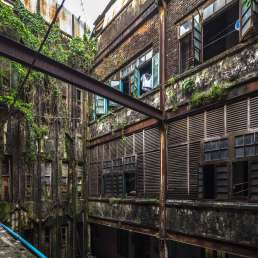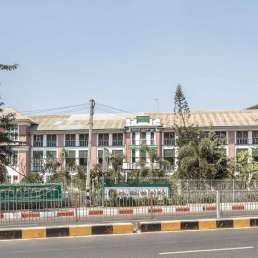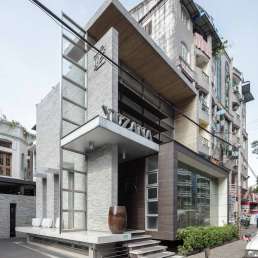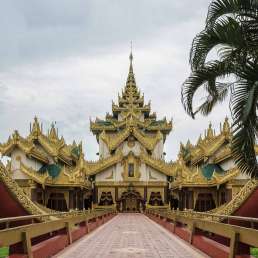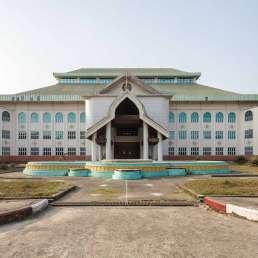Formerly: Insein Prison
Address: Main entrance on Hlaing River Road
Year built: 1887 (with later additions)
Architect: Unknown
Despite the government’s claims to have released the country’s remaining political prisoners (which is disputed—in fact, the UN Special Rapporteur for Human Rights in Myanmar believes they are jailing new ones), this building retains the haunting aura of its darkest days. Many pro-democracy activists were incarcerated here after the 1988 uprising, often in inhumane and squalid conditions. Insein Prison became known throughout the world as the ultimate symbol of the junta’s repression.
The origins of the correctional facility go back to the late 19th century. By that time, Insein was still only a small town, about 15 kilometres north of downtown Rangoon. The new prison here was intended to relieve the Rangoon Central Gaol (“gaol” being the more commonly used British spelling for “jail” during the period), which was reaching full capacity. By 1908, both Insein and Rangoon jails were by far the biggest in British Burma, with more than 2,000 inmates each. The Inspector-General of Prisons in Burma at the time reported proudly that growing inmate populations were proof of effective law enforcement. But by the 1920s, Burma had developed a reputation for being the most violent part of British India. With a population of 13 million, the government sent about 20,000 men to prison each year (women were also imprisoned, but their numbers usually stayed below 5 per cent of the total number of convicted men), which was four times the average of British India as a whole. This, needless to say, led to overcrowded prisons and further building works were needed to extend their capacity. By 2009, Insein Prison had space for about 5,000 to 6,000 inmates; however, an estimated 10,000 prisoners were being held here.
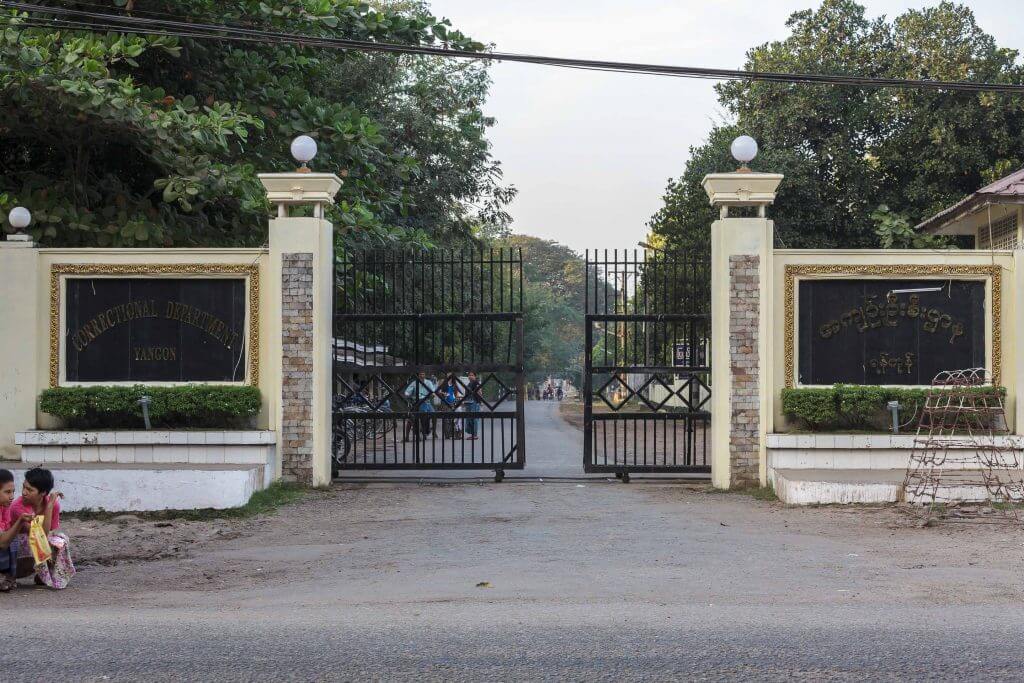
The architecture of Insein Prison closely follows the so-called Pentonville model, based on the late 18th-century theories of Jeremy Bentham, who proposed penitentiary designs hiding the jailer from the prisoners’ sight, encouraging “the sentiment of a sort of omnipresence”. Located in north London and built in 1842, the prison revolutionised correctional facilities in 19th-century Britain, with reverberations across the Empire. Confronted with a growing inmate population and a move away from the idea of “punishment” towards the “reform” of prisoners (whether that was systematically achieved in practice is another question), the main features of these new-generation prisons were: a structure of building wings revolving around a central observation tower; walls between prison cells hindering communication between inmates; and workshops allowing prisoners to learn a trade while in confinement.
The Rangoon Central Gaol was demolished some time after the war (its former site is where the New General Hospital is located now, just north of Bogyoke Road) and Insein Prison became the main correctional facility for the capital region. Its notoriety grew with the government’s growing reputation for brutality. During Ne Win’s reign (1962–1988), undesirable political opponents were regularly put away here—including architect U Kyaw Lin, who built the Thakin Kodaw Hmaing Mausoleum among many other projects. Later, with the student protests, these numbers swelled dramatically. The horrors experienced by the inmates are difficult to fathom. Punishments included solitary confinement for extended periods, torture and denial of medical care. Sanitary conditions were unbearable. Several former political prisoners have discussed their experiences in writing. One former political prisoner, Dr Ma Thida, named her memoirs Sanchaung, Insein, Harvard to illustrate her trajectory from a Yangon youth to the prestigious halls of an Ivy League university—and the traumatic years in between, from 1993 to 1999, when she became a cause celebre of human rights groups. Other former political prisoners work full-time to expose injustices in the regime’s penal system. Based in the border town of Mae Sot, Thailand, the Assistance Association for Political Prisoners (Burma) (AAPP) lobbies to support political prisoners and honours the memories of those who died behind bars. Their offices contain a replica of an Insein jail cell and a miniature model of the correctional facility.
Insein Prison is, of course, inaccessible to outsiders. The main gate leads to several checkpoints visitors must pass before reaching the compound. But you may get a chance to study the prison’s layout from your aeroplane seat. If leaving Yangon by plane in a westerly direction, those sitting on the right may well catch a glimpse of the prison beneath them, even at night. Its radial design stands out.
In early 2015, the AAPP estimated that there were still about 160 political prisoners in Myanmar, most of them within the walls of Insein Prison.
